#processing fibers
Text
I got to help process flax today with the swiss organization ZiehLein.
A neighbor of a family friend planted 20m² of flax this year and she asked me to help her process it.

We processed a bit more than this between the two of us.



And she let me take 5 of those things home with me.
66 notes
·
View notes
Text



First art of the new year is all about re-structuring your internal monologue.
In my early 20s I was working full time in London with many social commitments and a variety of hustles and side projects.
In my later mid 20s I cater to many sensory and social drain needs I have and indulge in special interests while respecting my lower energy reserves and celebrating my different way of processing the world.
Did I get more autistic? Nah. I got less fake.
-
[Art description: Three panels showing figures on a black background. Long descriptions follow.
1. A drawing of OP as a person with hip-length hair and a dress standing sadly with her hands clapsed together in front of her. She is coloured a muted rainbow gradient. Behind her, two pairs of nondescript figures chat while smiling. White text says, ‘I’m getting more and more autistic the older I get.’ 2. OP’s colours are brighter, and her expression looks happier. Crayon-like scribbles have crossed out the text from the previous panel. 3. OP’s colours are vibrant, and she balances on one leg and throws her arms out as she dances. The text above has changed to say, ‘I’m becoming more and more myself the older I get.’ \End descriptions]
#urchin art#autism#autistic#neurodivergent#neurodiversity#actually autistic#autistic things#autistic adult#autistic artist#autistic community#listen- the process of unmasking every fiber of your fabricated being is difficult#figuring out who you are behind the mask is scary#but continuing to act in a play where only you got no script is officially cringe#(this is me waxing poetic I am very aware of the safety needs of masking but that's not the point)#the point is ask yourself#are you getting MORE xyz?#Or are you becoming MORE of you?
5K notes
·
View notes
Text
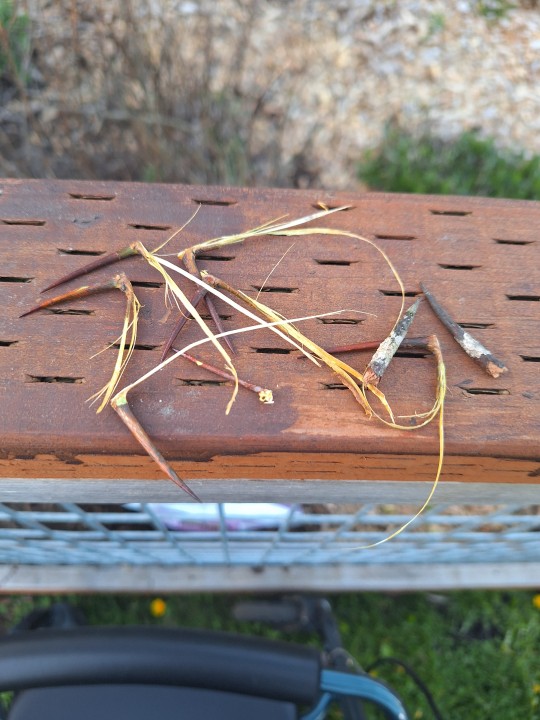
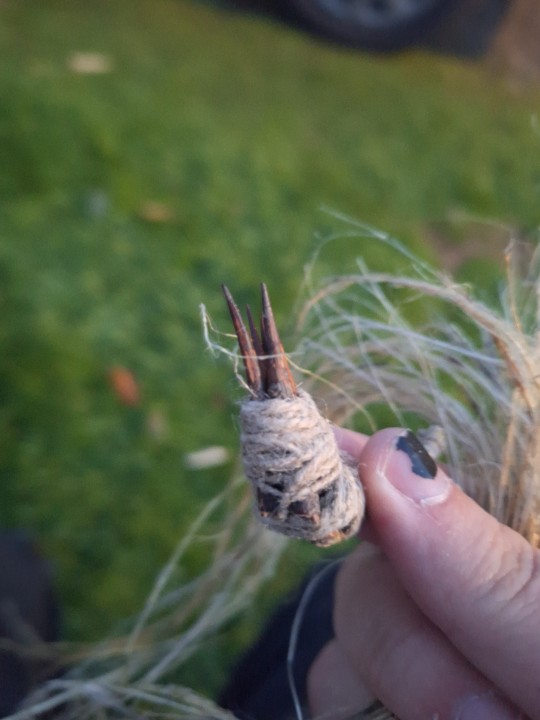
Proof of concept thorn tool. (Much better versions of) these are known throughout prehistory and were used to process plant fibers. I didn't know if they'd work well enough on milkweed to bother with, but now I have tried.
I probably need at least 30 thorns, and definitely longer ones. I was collecting and storing some in my rollator bag, and I think they might have been falling out because I definitely picked way more. But even like 7 or so very short ones bound together (badly) with flax was still, in fact, a far more effective tool than just my hands.
I only processed one milkweed stalk, since it was getting dark and this tool does absolutely suck, but I got it from whole rhetted stalk to fiber in about 10 minutes, and I think I could easily do 2 or 3 stalks at once and it would take the same.
I first smashed the stalk with a hammerstone against a wooden stump to get the hard pith out. The stone on wood technique is new to me but very effective. I'd been trying stone on stone (lack of available tree stumps to work on) and it hardly gets the pith out at all. But stone on wood is super effective as well, definitely will keep doing that.
After removing the pith I combed it repeatedly with the tool. This was made difficult by the fact that the tool was constantly wiggling around and falling apart. But it quickly stripped the outer layer off the fibers. Previously I had been rubbing them between my hands, which was very very slow and tended to damage the fibers. I got the idea from Sally Pointer's videos, but I think milkweed might just have too thin an outer layer ? Or some other reason (or maybe I was doing it wrong, but I don't see how as it is just rubbing). So the tool worked much better and faster. It did produce a lot of tow, although better technique and a better tool will probably help with that.
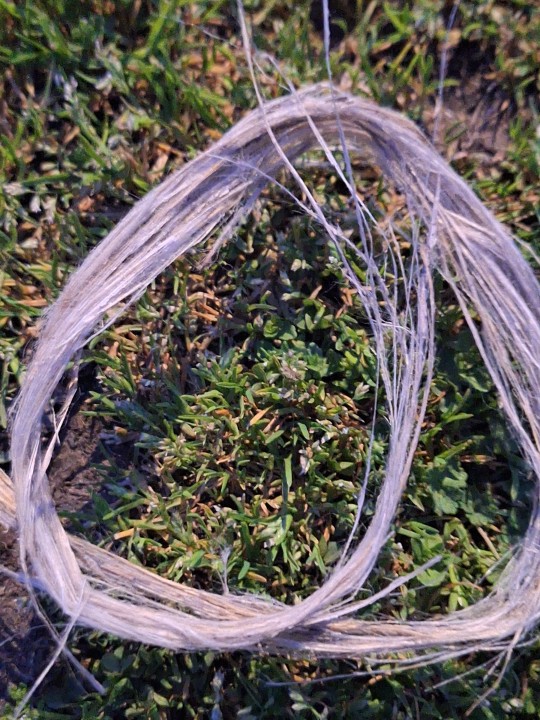
The line fibers

The tow fibers (top--I didn't have the energy to clean them up, but these should be spinnable as a rolag once I do)
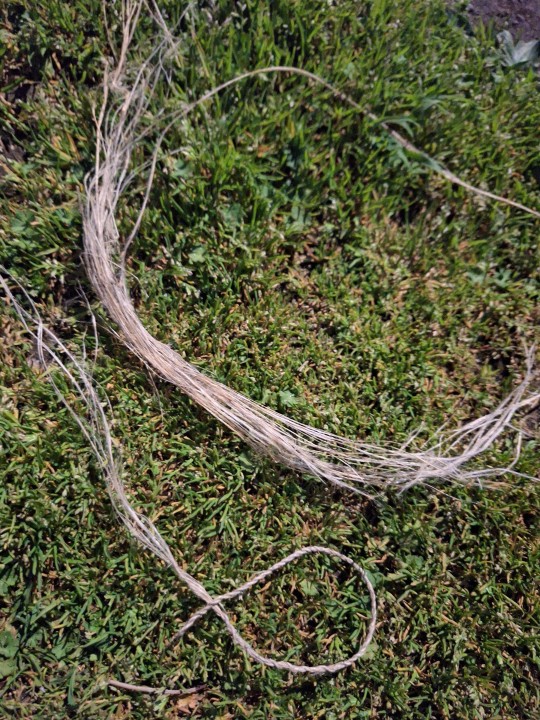

Also tried a little cordage. My twist ratio was way off, which is a new cordage problem for me. I was curious how it would work up, but I don't plan to continue it. Not sure what to do with the rest of the milkweed though. I'm not very confident about spinning it, although maybe if I processed it more I'd have a better chance. At the moment it feels very rigid...not like the flax or hemp I've used.
Anyway, I need to go back to the hawthorn trees I found in the winter and look for new thorns I guess, although it might be too early. I really want a better tool so I can process the mountain of milkweed stalks before I move.


#milkweed#fiber processing#sorry for the bad pictures it was night when i finished#prehistoric fashion#(thats just my prehistory tag but also if i can spin it it will be prehistoric fashion so)#bast fiber
225 notes
·
View notes
Text
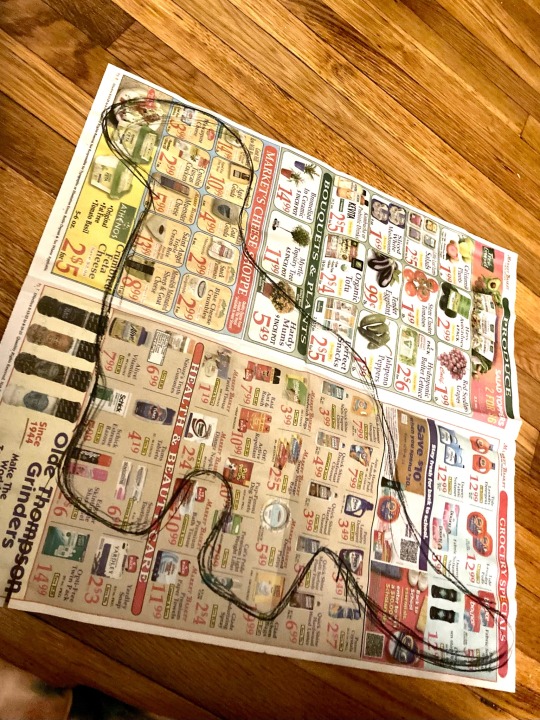
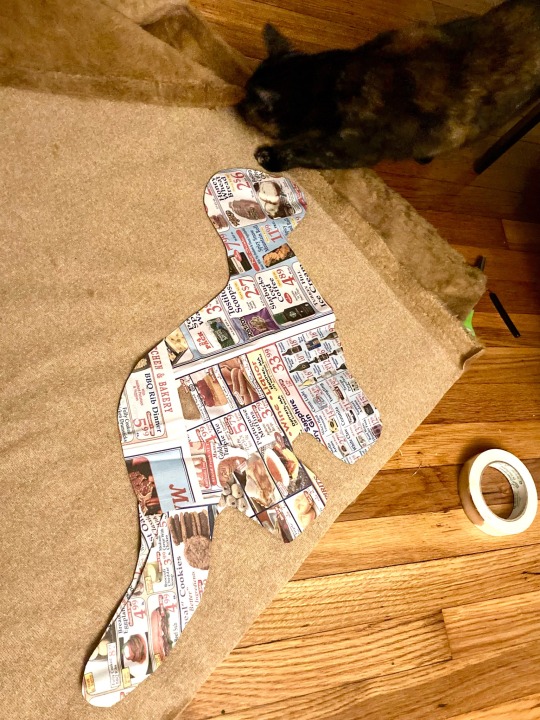
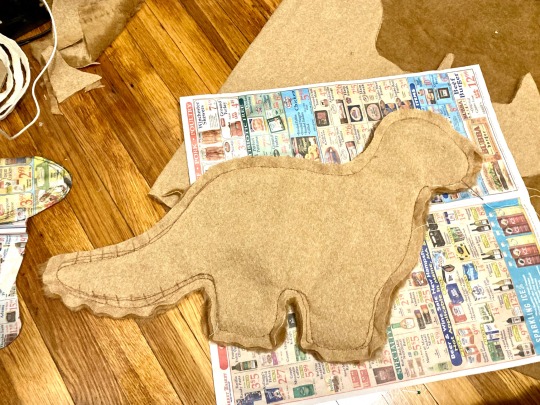


The making of a dinosaur chicken nugget pillow 🦕
Made as a birthday gift for my friend! With crucial help from Maple the cat.
#dino chicken nuggets#dinosaur chicken nuggets#cats#dinosaur#dinosaurs#pillow#fiber arts#fiber art#sewing#diy#art process
335 notes
·
View notes
Text

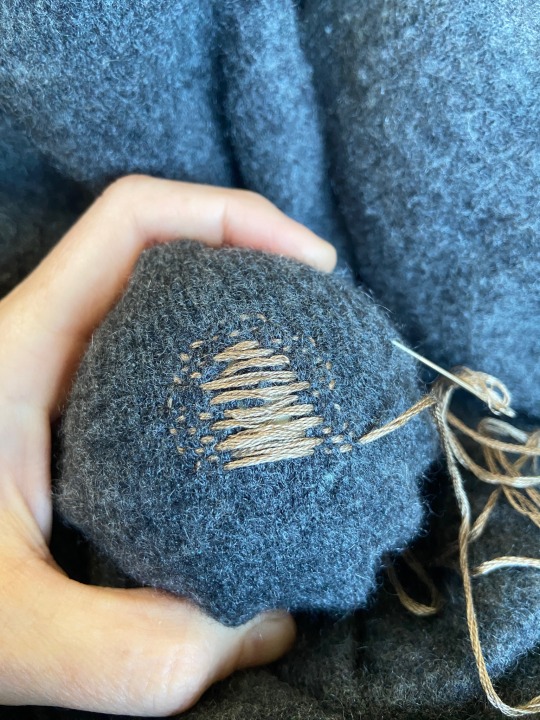

Practicing darning on some cashmere sweaters. It makes me think of fireworks. Little explosions of color.
277 notes
·
View notes
Text
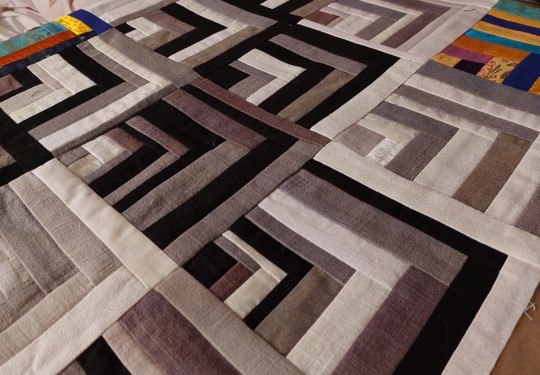
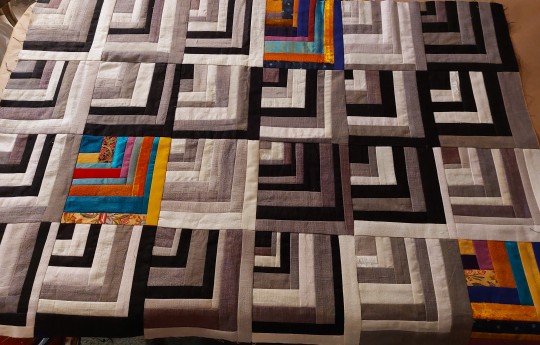
when I was looking for that other piece, I ended up also finding this scrap quilt I put on hold. i think I always wanted to come back to this one but seeing it again really makes me want to finish it soon 👀
170 notes
·
View notes
Text
victory is mine!

well, like 90% mine.
the bad parts are twofold. the first is that i was hoping that the licker in would lose some of the grey fleece that's all over it when i ran through some of the garbage compacted rambouillet with the bad dye job that i hate, and that didn't happen even a little. so tomorrow i'm going to be sitting out there with toothpicks, tweezers, and a toothbrush, pulling out all the old fleece.
the other thing is that carding this generated a fair bit of dusty rubble that i think is some of the rubber from the carding cloth. i'm not super worried about this. it doesn't seem to be catching in the wool at all, and the teeth are in great shape and pretty secure regardless. my handcards are pretty stiff (undesirably so) and these teeth have more play than those, but seem well seated. 🤞
the good news!
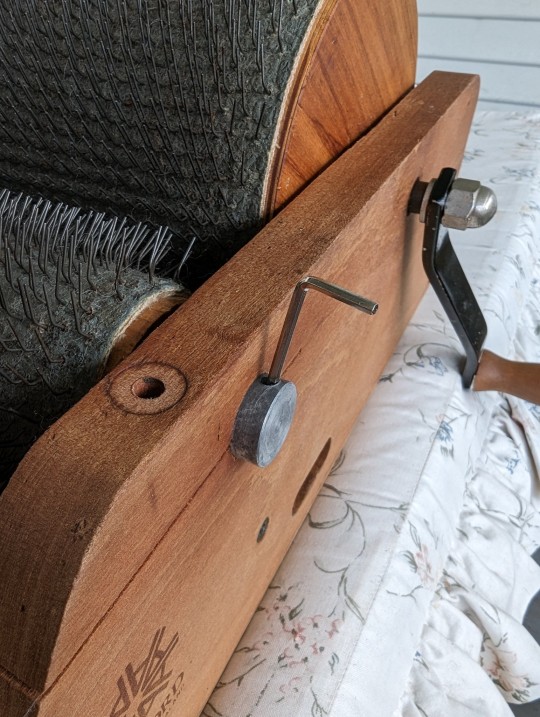
first, if you don't have the pin to adjust your tension, any one of the millions of small hex wrenches that have come with every piece of furniture you've ever bought will be fine.

second, that's a batt! weird light because the sun was nearly gone, and the carder is resting on my leg, but that's definitely a batt! it's actually a shockingly nice batt, so nice that it makes the terrible no-good very bad fibre... enjoyable?? not this bit of it, obviously, since it was mostly to see if things worked and remove old fleece from the larger drum (very effective), but if the drum had been clean, i absolutely would've spun this.
at some point i'm going to pull her back apart and give her a good coat of wood oil, and i obviously still have to clean the licker in, but all up, this was very successful and i feel good about it. the carder is about as old as i am--this model was ashford's first drum carder, so far as i can tell, and they only made it from 81 to 83--and it has clearly seen a lot of use. hopefully we'll get many years of use of it, too!
(obligatory photo of the sunset as i headed inside)

84 notes
·
View notes
Text
No rules quilting
Incorporating english paper pieced blocks in a largely foundation paper pieced design

Some shapes are a bad fit for foundation pieced designing. The chunky shapes I wanted for my gems were better accomplished with english paper piecing in 4 of my 7 swords.

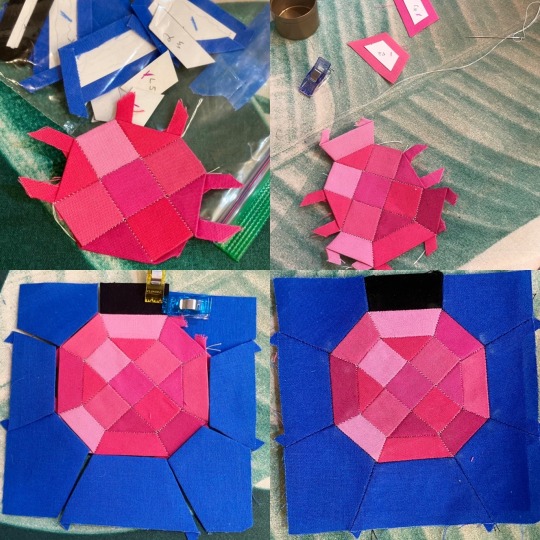
I am not experienced at hand piecing, this was my second try ever. I hope to improve my stitching in the future, I’d like it to be more consistent in size and tension.
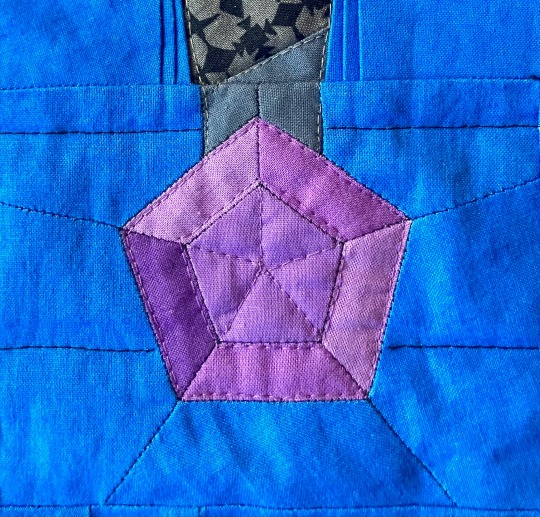

I found it hard to know how much smaller to make the gem patten, to account for the addition of slight bulk at the seams. I finally got it right on the last gem. (Also the easiest since it had the fewest seams to account for.)

FPP shapes only have Y seams where two FPP pattern pieces are being joined. For example, in the green gem the top group of 5 triangles and the bottom group of 3 triangles were separate pattern pieces.

I don’t think mixing techniques for this project distracts from the overall image, and I got the shapes I was looking for much more easily than if I had stuck to only FPP for the entire design.
10/10 will mix techniques again.
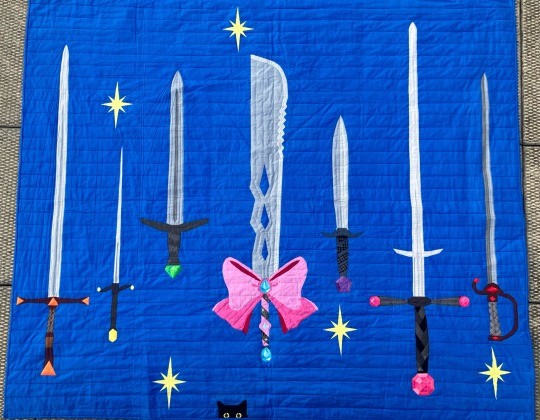
#it’s been fun going through my process photos as I work on my next design#quiltingwitch#quilting#textile art#artists on tumblr#fiber art#english paper piecing#foundation paper piecing#modern quilt#quilt#textile arts#sewing#art#swords#gems
85 notes
·
View notes
Text
You know how some clay artists make a little kiln god to protect their pottery? I need to crochet a little yarn god to make sure my projects always have good omens near them because I think I need that 😭😨
#crochet#art#if anybody has ideas for a yarn god PLEASE i think that would be cute#context: using a thin acrylic yarn (oh no) for a new project (fuck) that uses a stitch i'm okay with but not an expert on (SHIT)#and the only way to access the pattern is by video (thankfully the video maker is alright 🙏)#you know how people say that chunky yarn is hard to work with? i'm the opposite#i'm finding this acrylic yarn to be really fussy and i'm not sure i like it as a yarn at ALL#and some people make CLOTHES out of this yarn? i think i fear those people the most in this world#fiber art#holy shit this yarn is also a navy blue and this pattern is classed as intermediate#you know how they say to 'trust the process'? well i'm not trusting the process rn!!!! let me off!!!!!!! 😭😭😭
129 notes
·
View notes
Text
Currently working on a foraged fibers project!! Collected some dead dogbane stalks that have gone through the winter and therefore have been retted by nature (and not me in my apartment lol)
Am in the process of braking them to release the fibers- they’re very soft! I’m experimenting with the most efficient way to do it, and wishing that I had some flax processing equipment instead of cranking the stalks one by one through my pasta roller. I might try to stick them in a trash bag and jump on them, since I don’t have an outside area to work in and I’d rather not do this in the parking lot


Bonus little guy I saw while foraging:

155 notes
·
View notes
Text


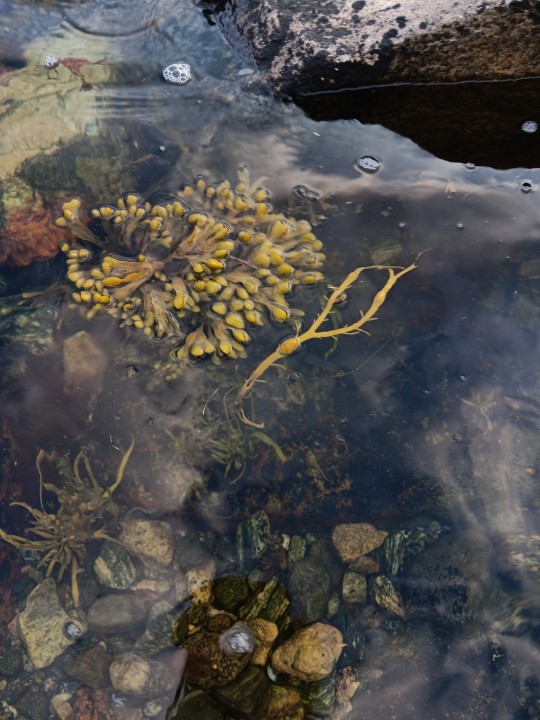
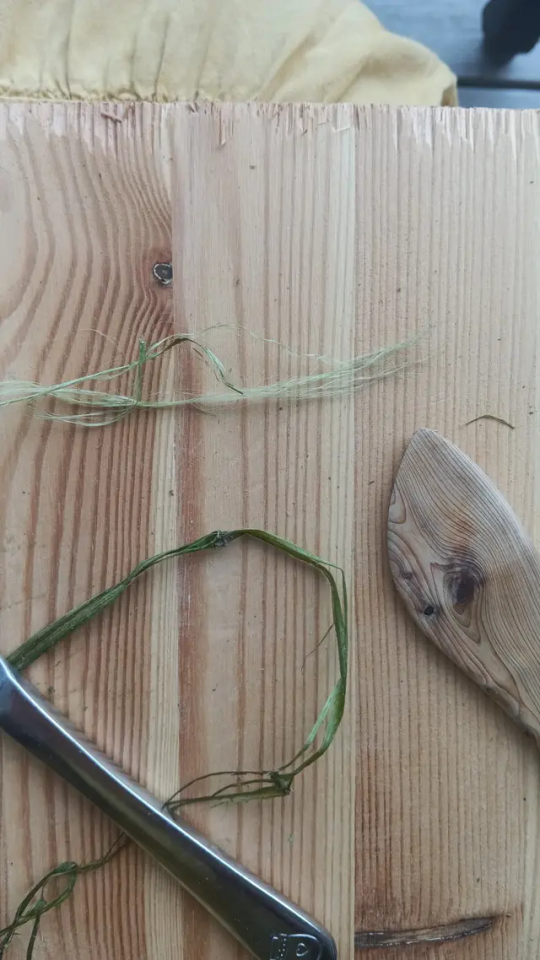
nettle saltwater retting !
#nettle processing#urtica dioica#didnt ret aaaall the nettles bc we forgot we had more from the day before ! but oh well it will be a good comparison#maker's diary#fiber processing
109 notes
·
View notes
Text
PAKIGE!!!
I had a new experiment idea!
What kind of affect has the cleaning method for raw wool on the finsihed yarn (softness, look, cleanness)


Before and after cleaning with dish detergent!
Spinning was a bit bumpy, because I didn't do any prepping


But 4,2 m on 0.21, not too bad (also very proud of the thinness)
I'll try:
scouring with potash
Suit fermentation (in tab water and destilled water)
Power scour from unicorn fiber
Plant based sapoids (chestnuts)
Store bought detergents (woolwash or dischsoap)
I bought 500g of raw Merino fleece so I can use 100g for each method (suit fermentation and store bought detergents 50g each)
I want to know how much water I need, how much energy, how much of a pain in the ass is the process, how lanolin free is the fiber after... (Any more questions I should get into? Let me know! How far friendly is it, listen I KNOW from my research that the suit method will be a PvP against my neighbors, but I need to smell for myself)
I'll dukument everything and maybe I'll write a article for my guilds magazine 👀
89 notes
·
View notes
Text
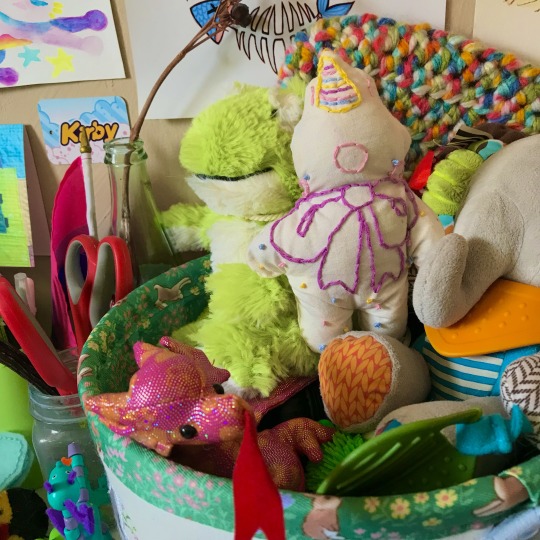


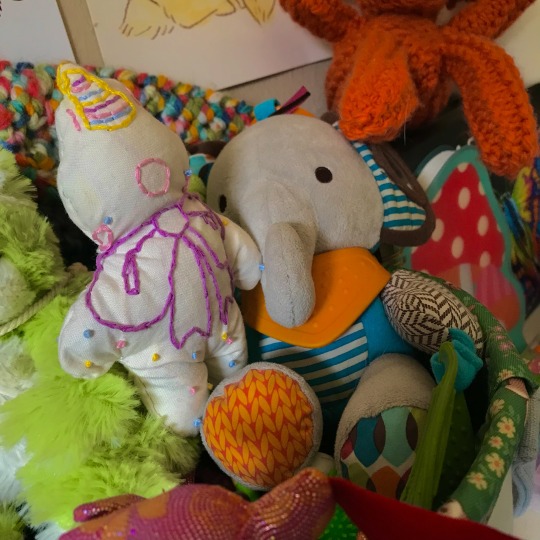


party guy! wish him a happy birthday! (also the photoshoot features my sensory basket) :3
#handmade plush#artists on tumblr#embroidery#kidcore#clowns#clowncore#party kei#handmade stuffed animals#plush artist#plushie art#cute art#cat plush#cat art#actually autistic#stim#sensory processing disorder#crafting#fiber arts#handcrafted#stim toys#radiofrogs
20 notes
·
View notes
Text
When you get to a point in fiber arts where you start wanting to learn other crafts just so that you can better make what you're making, that's when you know you're screwed
I keep eyeing inkle looms because I need to make woven straps for the handspun crochet bags I keep making and the knit icord strap is so annoying to make. And I will never know peace until I can make the Perfect Bags.


#this is how i got int9 fleece processing too#wanted to make something iron age but knew commerciap roving would be a shit substitute fot hand prepped fiber#spinning#knitting#handspun yarn#weaving#inkle loom#crochet#q
162 notes
·
View notes
Text
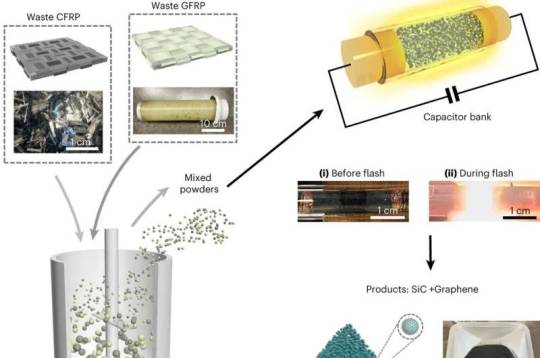
Recycling research finds new process to transform glass fiber-reinforced plastic into silicon carbide
Glass fiber-reinforced plastic (GFRP), a strong and durable composite material, is widely used in everything from aircraft parts to windmill blades. Yet the very qualities that make it robust enough to be used in so many different applications make it difficult to dispose of—consequently, most GFRP waste is buried in a landfill once it reaches its end of life.
According to a study published in Nature Sustainability, Rice University researchers and collaborators have developed a new, energy-efficient upcycling method to transform glass fiber-reinforced plastic (GFRP) into silicon carbide, widely used in semiconductors, sandpaper, and other products.
"GFRP is used to make very large things, and for the most part, we end up burying the wing structures of airplanes or windmill blades from a wind turbine whole in a landfill," said James Tour, the T.T. and W.F. Chao Professor and professor of chemistry and of materials science and nanoengineering. "Disposing of GFRP this way is just unsustainable. And until now, there has been no good way to recycle it."
Read more.
#Materials Science#Science#Recycling#Composites#Fiber reinforcement#Plastics#Polymers#Glass fibers#Fibers#Glass#Waste#Rice University#Materials processing
24 notes
·
View notes
Text
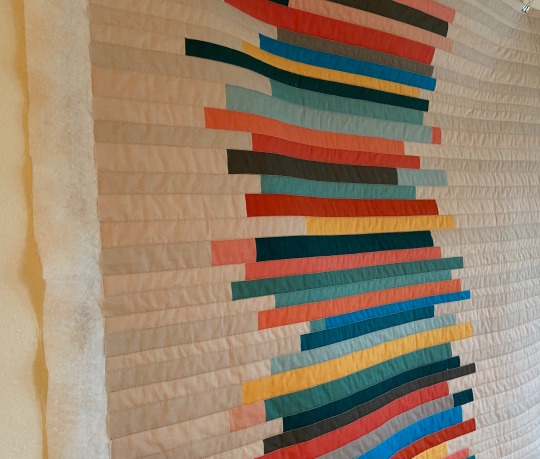
Working on one of my bar quilts for the Welcome Blanket Project.
68 notes
·
View notes